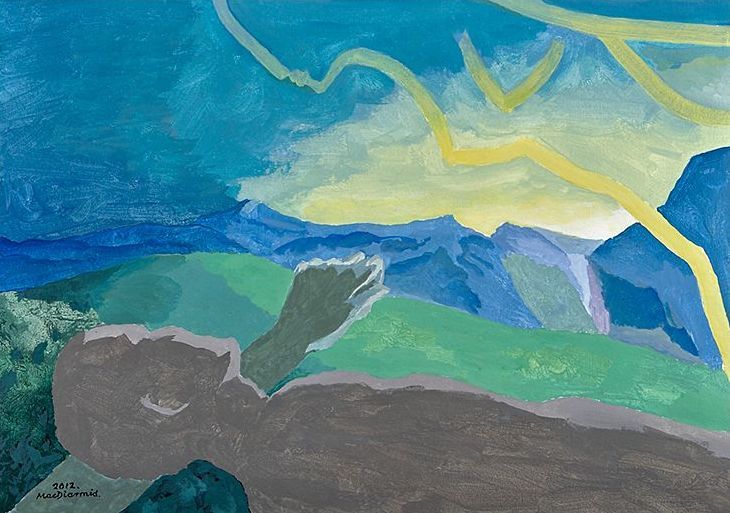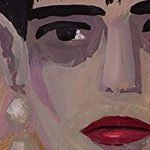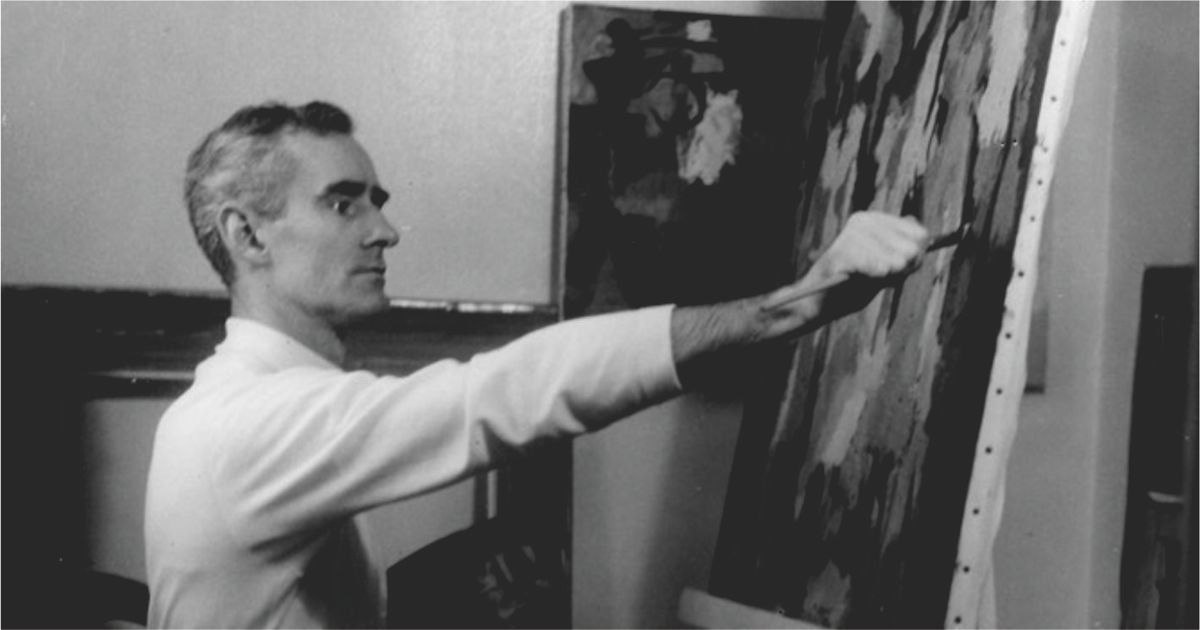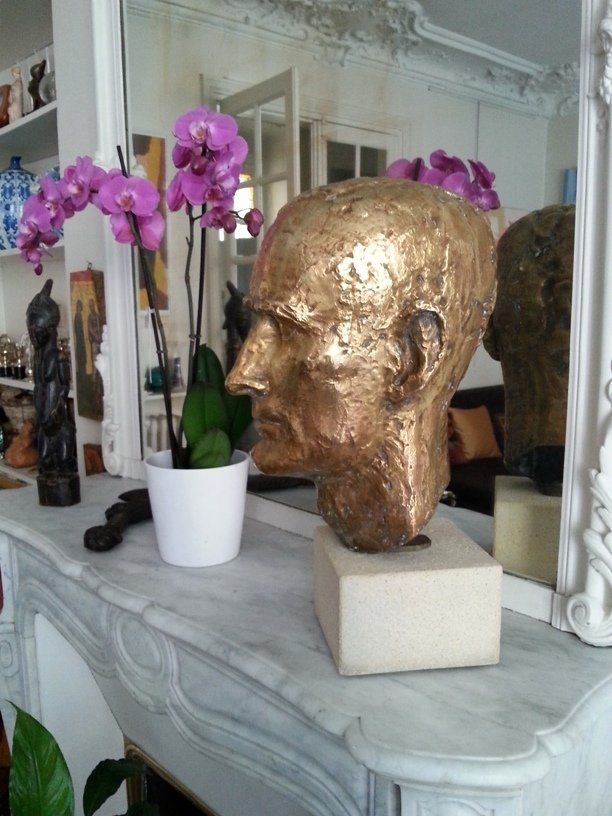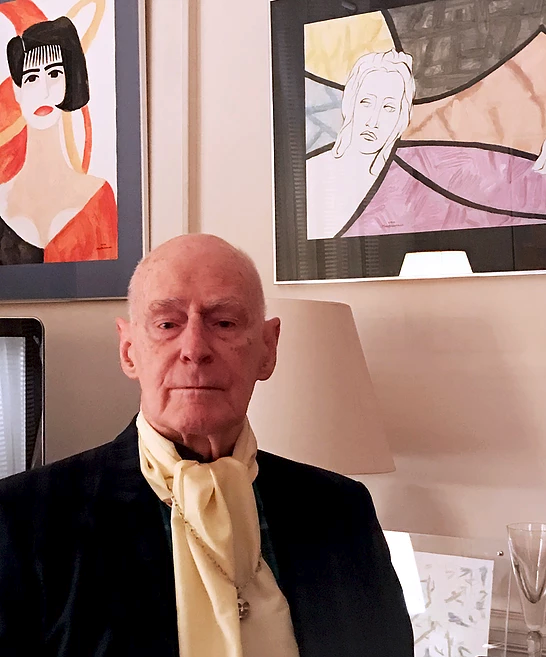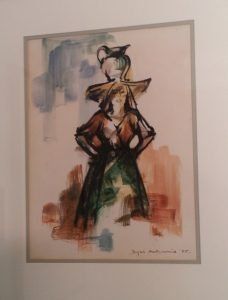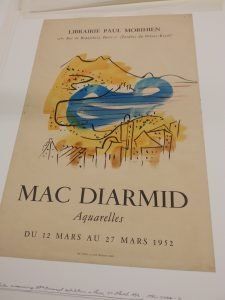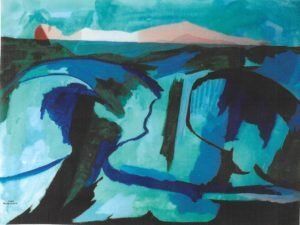Blood ties and instinct – portrait of Alan MacDiarmid
In 2001, Douglas MacDiarmid painted a fascinating portrait of his first cousin, Nobel Prize-winning New Zealand scientist Alan MacDiarmid.
Each bound up in his own passion on different continents, the two expatriates first met later in life yet found an immediate bond. Side by side Douglas and Alan are obviously related, by blood and nature. Highly inquisitive, persuasive communicators, their shared love of colour has distinguished both careers. This was a painting Douglas would have done sooner or later, but was motivated then by the New Zealand Portrait Gallery staging a competition to paint the newly decorated research chemist for posterity.
Not realising the prize was to paint cousin Alan, Douglas did a portrait of him straight off! Needless to say, he did not win. A more conventional painting by Marianne Muggeridge was chosen – but MacDiarmid’s take on MacDiarmid was widely admired by gallery visitors for capturing the very approachable and down-to-earth scientist with a questing mind.
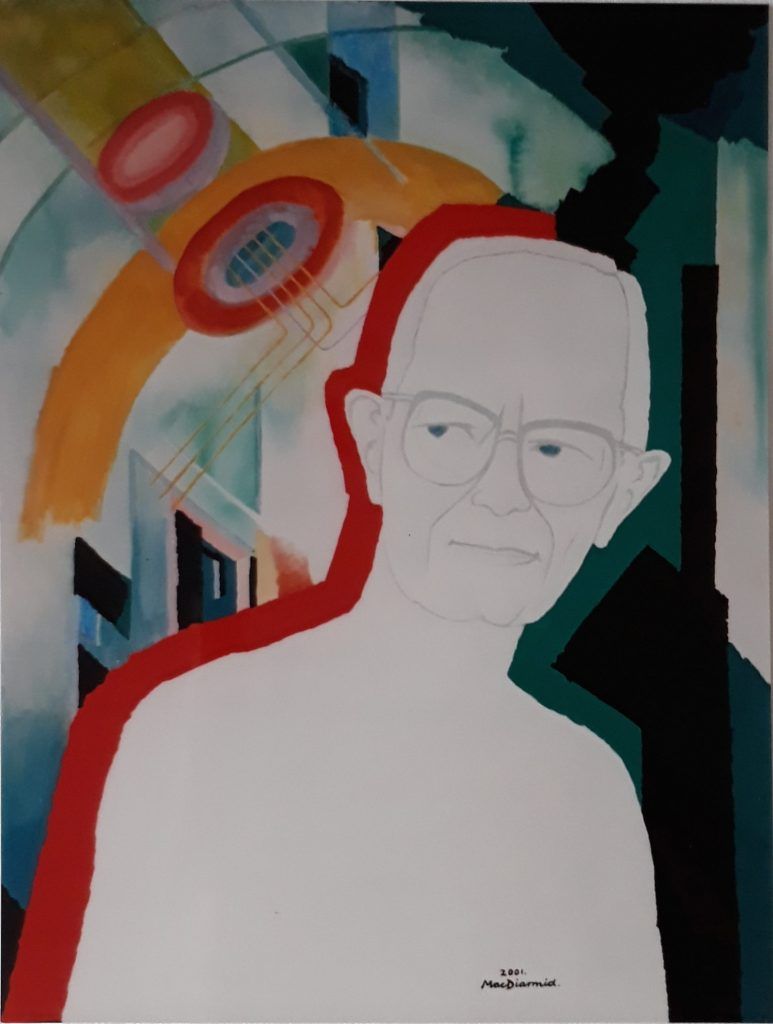
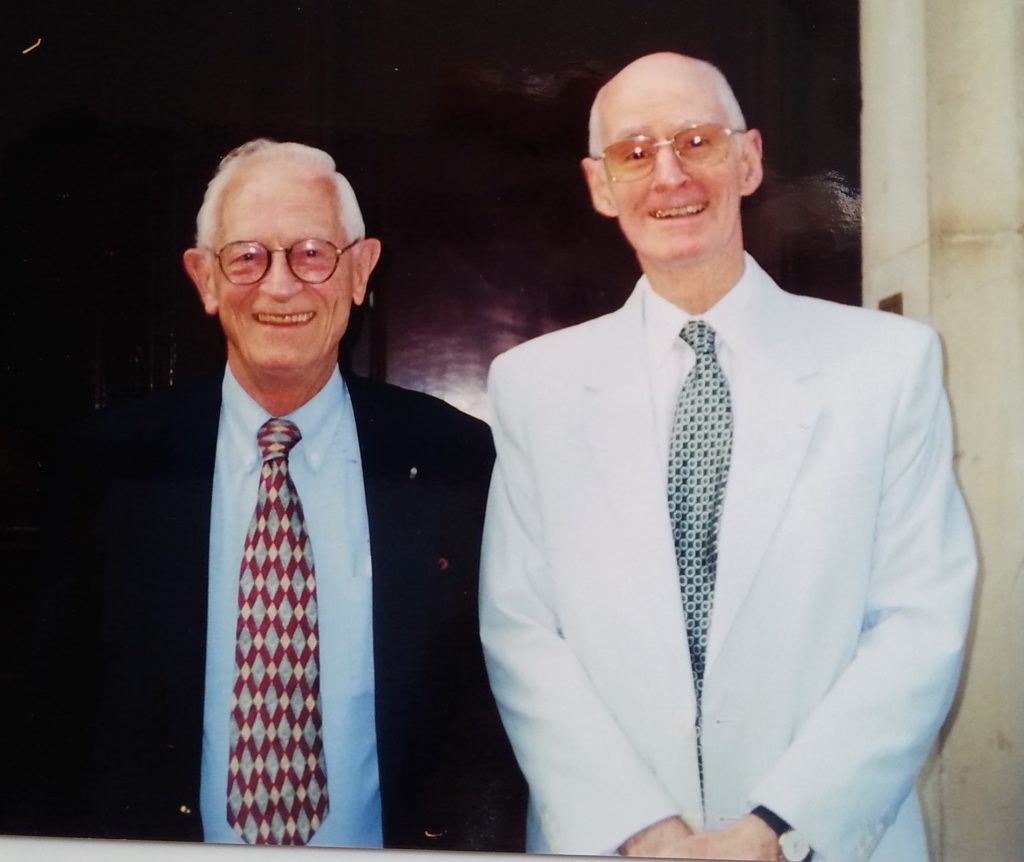
Who was Alan MacDiarmid?
Tragically, Laureate Professor Alan MacDiarmid died in 2007 after a fall, aged 80, having lived and worked most of his adult years in the United States – including 45 years in the chemistry department of the University of Pennsylvania.
To explain Alan MacDiarmid’s great finding: He and his team are considered information age pioneers for discovering and developing conductive plastic polymers. This brilliant advance for turning plastics from insulators into electrical carriers continues to underpin the future of electronics and nanotechnology – from lightweight electro-magnetic shields and mobile phone screens to light emitting diodes, lasers and, ultimately, the next generation of even tinier and faster computers.
Their work in the 1970s won them the 2000 Nobel Prize for Chemistry. Alan is only the third New Zealander, and second kiwi chemist, to be awarded the prize. There was a lovely family synchronicity when he received the first Rutherford medal, the Royal Society of New Zealand’s top science and technology honour, a year later. Not only was the celebrated Nobel chemist Lord Ernest Rutherford a childhood hero but also a boyhood friend of Arch MacDiarmid, Alan’s engineer father.
Intriguingly, Alan admitted the trigger for the research “really springs from the fact that I like colour” – a trait he shared with his painterly cousin. Like Douglas, the acclaimed research chemist always maintained his New Zealand-ness. He considered his humble Kiwi beginnings in the Great Depression years to be the basis of his success.
Find out more about Alan MacDiarmid in Te Ara – The Encyclopedia of New Zealand.
Interpreting the rationale behind his painting, Douglas said: “To my mind the portrait of a Nobel Prize Winner is the antithesis of a personal matter. So I have not sought ‘to show the character of A. MacDiarmid’ so much as to evoke, in terms of my cousin, the essential features of a scientist of his calibre: piercing simplicity and a questioning mind. The one personal aspect which I hope comes through is that he is not a mad genius but fair-minded and likeable for all his brilliance.
“The Nobel Prize has propelled Alan into the position of a national hero. This is why I’ve painted him in sheer white – white being outside the spectrum serves to set the hero apart (which, I’m ready to bet, any hard-working hero must long for more often).
“To evoke a background world of science I chose (and mucked about with a bit) an installation for making metallic hydrogen. It’s not a specialisation of Alan’s but good for colour-play, and bears down on the scientist with something of the weight of responsibility. A propos, it’s not possible to pass over the link between dizzy achievements in science and the redoubtable power of terrorism, hence a hint of doom in the black fragmenting down from the top right corner. The complementary bands of red and green around the white figure convey tension of absolute polarity. The proportions of the composition are based on rigorous mathematical principles extant over centuries. Acrylic colours.”
Portrait of Alan MacDiarmid 2001 is one of the most arresting images displayed in the national gallery’s online collection, next to the official portrait of its creator Douglas MacDiarmid.
This painting lived in the MacDiarmid Institute for Advanced Materials and Nanotechnology, the centre of a national network of New Zealand’s leading scientists, at Victoria University of Wellington for some years.
Both paintings have made a popular return to the public eye in the New Zealand Portrait Gallery’s exhibition Colours of a Life: Douglas MacDiarmid in support of the launch of his biography of the same name. The exhibition runs until 23 September 2018, and Alan’s portrait is illustrated in Douglas’ biography Colours of a Life (page 380).
While we were at the New Zealand Portrait Gallery for the Colours of a Life exhibition, we took the opportunity to capture the thoughts of some of our guests with their favourite artwork. Thank you to Douglas’ eldest niece Wendy Perriam for her thoughts on Douglas’ 2001 portrait of cousin Alan MacDiarmid.
To read more about Douglas MacDiarmid’s fascinating journey through life Buy your copy of Colours of a Life – the life and times of Douglas MacDiarmid by Anna Cahill (2018)

